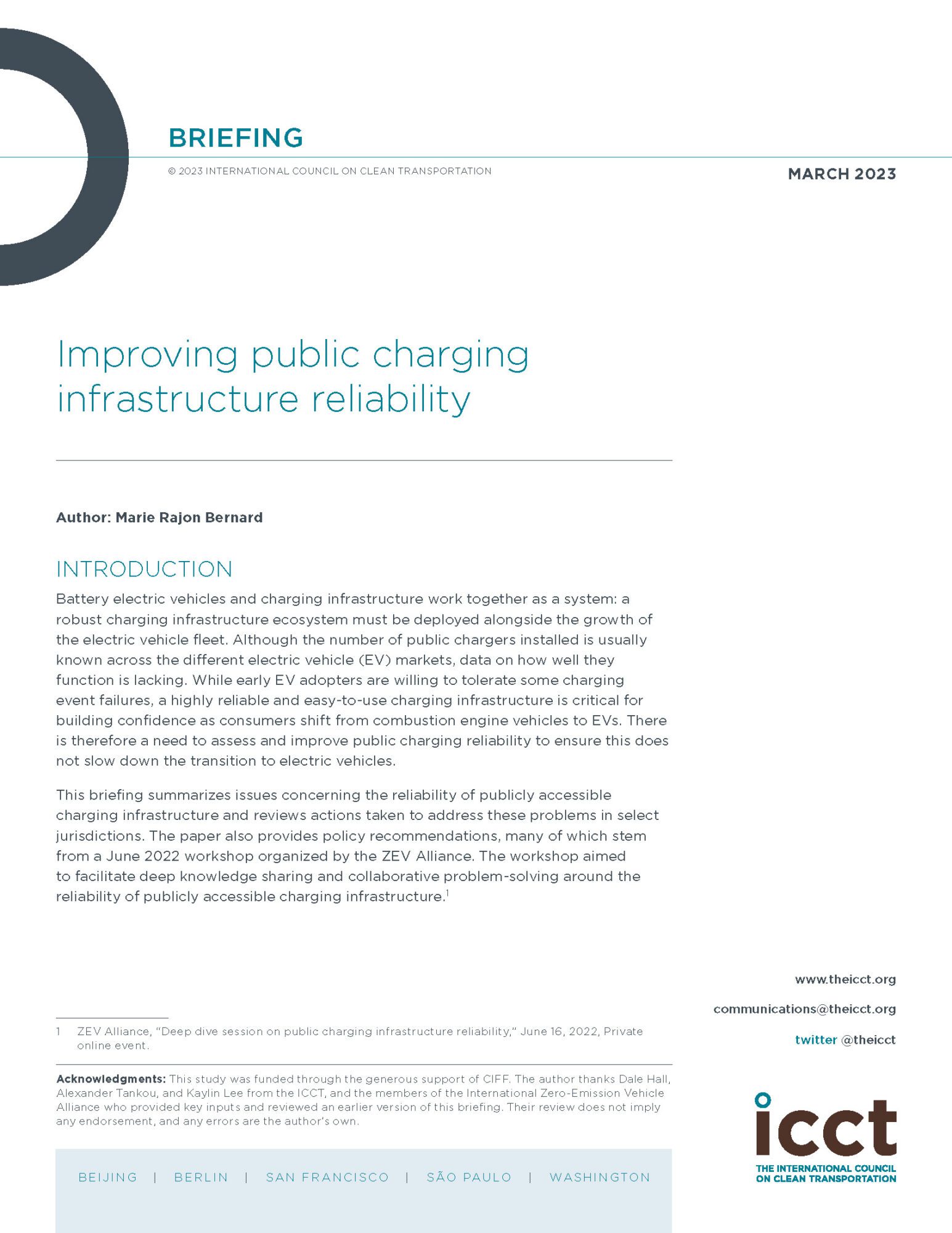Blog
Public EV charging in the United States is about to get a whole lot easier
Now that there are millions of electric vehicles (EVs) on U.S. roads, close attention is being paid to public charging reliability and accessibility, including plug compatibility, charger functionality, and the mechanics of payment. On all three fronts there’s good news for current and prospective EV drivers in the United States.
Thanks to a few big developments, in the coming years, nearly all EVs will be able to charge at nearly any public charger. Additionally, a federal program is slated to help ensure that chargers operate properly and that payment processing gets a lot easier by allowing users to use a single app to pay at any charger.
First let’s talk about compatibility and a newly formalized standard. Last spring, Ford made a major splash by announcing that starting in 2025, it will manufacturer its EVs using the North American Charging Standard (NACS) inlet derived from Tesla’s charging standard. After that, most major automakers (except Stellantis) and all the major charging infrastructure networks, including Electrify America, EVgo, Blink, and ChargePoint, made similar commitments to adopt the NACS inlet and connector in their North American vehicles and chargers, respectively. Then engineering standards-development organization SAE International said it would expedite the standardization process for NACS to make it an independent standard available for all. In December 2023, SAE released a Technical Information Report developing a standard for the “J3400” NACS connector.
Industry cohesion around the J3400 NACS charging standard, a universal plug shape, is significant because historically the U.S. market has had a variety of different connectors. This is in contrast with the two leading EV markets, China and Europe, where automakers have been mandated to use a harmonized charging standard for several years. In the United States, for Level 2 AC charging, Teslas use NACS and all other EV models have used a different plug called J1772. For DC fast charging, Teslas also use NACS, but most automakers have used a plug called the Combined Charging System (CCS) and some others have used a third plug type called CHAdeMO. This variety of charging connectors has meant that EV drivers seeking public charging need to check (1) if there are chargers along their route and (2) if those chargers are compatible with their vehicle. This won’t be the case for much longer.
The standardization of the J3400 NACS connector means that soon nearly all new EVs will be able to charge at nearly all charging stations. And for the millions of EVs already on U.S. roads, most non-Tesla EV drivers will soon gain access to Tesla’s NACS charging stations using an adapter. Uncertainty remains about how adapters will be rolled out to consumers, but automakers and charging providers will play a key role in helping consumers work through this and better understand their expanded charging options. For example, Ford recently announced that it will provide free charging adapters to its customers.
The industry shift to NACS comes with additional benefits. The NACS connector is more capable than the CCS connector because it allows higher amperages in both AC and DC operation, which translates to more potential power and less time spent at a charger. The NACS connector is also lighter and more ergonomic than other standards. Under a single standard, there won’t be any need to install charging stations with multiple connectors, and hardware costs will be less. In addition, NACS supports higher-voltage Level 2 charging that aligns with the voltage supply at many commercial locations. This means that chargers could be installed at locations that otherwise would require transformer upgrades, such as many mixed-use apartments and workplaces. Cheaper hardware and installation costs for charging projects could mean cheaper charging rates and even more savings for EV drivers.
Now let’s talk about helping to ensure that chargers function properly and that payment options are simple, accessible, and consistent across chargers in the United States. Communication errors between the EV and the charger and payment processing issues are common reasons why chargers malfunction. Standard communication protocols would go a long way toward improving reliability and optimizing payment. The communication protocols for the J3400 standard differ from Tesla’s legacy protocols and there is still work to be done by Tesla, other automakers, and charging manufacturers to ensure that all EVs and all chargers are interoperable. Fortunately, the federal National Electric Vehicle Infrastructure (NEVI) program, which is to provide funding for the installation of hundreds of thousands of chargers over the next several years, requires the implementation of the latest OCPP and OCPI standardized protocols for charger to network communication, as well as ISO 15118 for EV-to-charger communication. Together these standardized protocols will, among other things, reduce malfunctions by having all EVs and chargers speak the same “language”; expand error message reporting to allow for timely, precise, and lasting troubleshooting of faulty chargers; streamline payment processing and charger operation by allowing users to operate and pay for any charger from any company using a single app; and eventually allow for plug-and-charge capability for all chargers and EVs.
NEVI funding also comes with requirements that charging operators provide contactless payment options and guarantee that chargers are fully functional at least 97% of the time. On the latter, the federal government has already invested $150 million to repair and replace broken and faulty chargers across the United States. Because the NEVI program was developed prior to the J3400 NACS connector becoming a universal standard, the program does not require that NEVI-funded charging stations include the connector. However, since the industry has already largely agreed to adopt the standard, the federal government has expressed a willingness to update the program requirements and is likely to require the connector once SAE finalizes the standard by mid-2024.
As the NACS and NEVI roll out in tandem over the coming years, EV drivers in the United States will see both increased interoperability of charging stations and increased reliability. EV drivers and supporters have long sought to make EV charging away from home as simple and easy as filling up a gasoline car, and these developments are monumental steps toward making that a reality.
Author

Logan Pierce
Associate Researcher

Peter Slowik
U.S. Passenger Vehicles Lead
Related Publications
Summarizes issues concerning the reliability of publicly accessible charging infrastructure, reviews actions in select jurisdictions, and provides a framework to address these issues.

